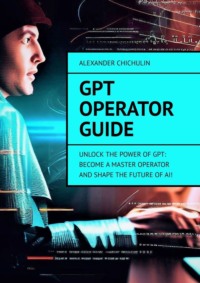
GPT Operator Guide. Unlock the Power of GPT: Become a Master Operator and Shape the Future of AI!
7. Configuration Tuning: Configure the hyperparameters and settings of the GPT models based on your specific requirements. This may include adjusting batch sizes, learning rates, optimizer choices, or fine-tuning strategies to optimize the model’s performance for your use case.
8. Performance Optimization: Optimize the performance of your GPT system by leveraging techniques such as model parallelism, distributed training, or caching mechanisms. These optimizations can improve training speed, reduce inference latency, and enhance overall system efficiency.
9. Monitoring and Maintenance: Implement monitoring and logging mechanisms to track the performance and health of your GPT system. Set up alerts and metrics to monitor resource utilization, model accuracy, system errors, and other key performance indicators.
10. System Security and Privacy: Ensure that your GPT system follows best practices for security and privacy. Implement measures such as access controls, encryption, and data anonymization to protect sensitive information and comply with relevant regulations.
It’s important to document the system setup and configuration process, including the software versions, dependencies, and configurations used. This documentation helps in troubleshooting, scaling the system, and reproducing the setup in different environments.
By effectively setting up and configuring the GPT system, you lay a solid foundation for its operation, enabling smooth training, fine-tuning, deployment, and maintenance of GPT models.
Managing GPT Model Deployment
As a GPT Operator, effectively managing the deployment of GPT models is crucial to ensure their availability, performance, and scalability. Here are key aspects to consider when managing GPT model deployment:
1. Deployment Infrastructure: Choose an appropriate infrastructure to deploy your GPT models. This can involve setting up dedicated servers, cloud-based instances, or containerized environments. Consider factors such as scalability, resource allocation, and cost-efficiency when selecting the deployment infrastructure.
2. Model Versioning: Implement a versioning system for your GPT models. This allows you to manage different iterations or updates of the models, facilitating easy rollback, experimentation, and tracking of performance improvements or changes.
3. Continuous Integration and Deployment (CI/CD): Set up a CI/CD pipeline to automate the deployment process. This ensures that changes or updates to the GPT models are seamlessly deployed, reducing manual errors and improving overall efficiency. Integration with version control systems and automated testing frameworks can help streamline the CI/CD pipeline.
4. Scalability and Load Balancing: Design the deployment architecture to handle varying workloads and ensure scalability. Utilize load balancing techniques to distribute incoming requests across multiple instances or servers, preventing overload and optimizing resource utilization.
5. Monitoring and Logging: Implement monitoring tools and logging mechanisms to track the performance, usage, and health of deployed GPT models. Monitor key metrics such as response time, throughput, resource utilization, and error rates. This allows you to detect anomalies, troubleshoot issues, and optimize system performance.
6. Autoscaling: Consider implementing autoscaling capabilities to dynamically adjust the deployment infrastructure based on workload demand. Autoscaling ensures that the system can handle increased traffic or workload spikes without compromising performance or incurring unnecessary costs during low-demand periods.
7. Error Handling and Retry Mechanisms: Implement error handling and retry mechanisms to handle transient errors or system failures. This can include strategies such as exponential backoff, circuit breakers, and error logging. By gracefully handling errors, you can minimize disruption to user experience and improve system reliability.
8. Security and Access Control: Implement security measures to protect the deployed GPT models and the data they process. This includes secure communication protocols, authentication mechanisms, and access controls. Regularly update and patch software dependencies to address security vulnerabilities.
9. Model Performance Monitoring and Optimization: Continuously monitor the performance of the deployed GPT models and optimize them based on user feedback and performance metrics. This can involve fine-tuning hyperparameters, retraining models with additional data, or exploring techniques like ensemble modeling to improve accuracy and user satisfaction.
10. Compliance and Ethical Considerations: Ensure compliance with relevant regulations and ethical guidelines when deploying GPT models. Address concerns related to data privacy, fairness, bias, and responsible AI usage. Conduct regular audits and assessments to ensure adherence to compliance requirements.
Конец ознакомительного фрагмента.
Текст предоставлен ООО «ЛитРес».
Прочитайте эту книгу целиком, купив полную легальную версию на ЛитРес.
Безопасно оплатить книгу можно банковской картой Visa, MasterCard, Maestro, со счета мобильного телефона, с платежного терминала, в салоне МТС или Связной, через PayPal, WebMoney, Яндекс.Деньги, QIWI Кошелек, бонусными картами или другим удобным Вам способом.
Вы ознакомились с фрагментом книги.
Для бесплатного чтения открыта только часть текста.
Приобретайте полный текст книги у нашего партнера:
Всего 10 форматов